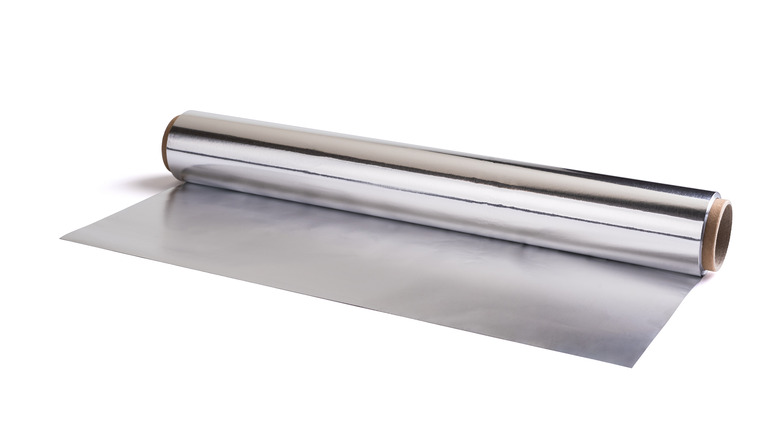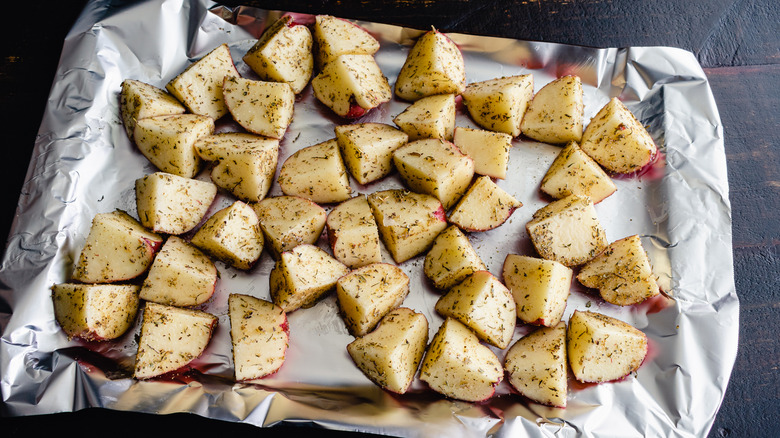Why Using The Shiny Side Of Tin Foil Doesn't Actually Matter
When it comes to proper usage of tin foil, there are three different camps — Team Shiny Side Up, Team Shiny Side Down, and Team It Doesn't Matter. Voices on the internet tout conflicting perspectives, but who is, in fact, right? As it turns out, both the dull and reflective sides will behave in exactly the same way, so it's Team It Doesn't Matter for the win!
The different tones are actually just a result of how the foil is made and have no bearing on the functionality. To make foil, it has to be heated and stretched into thin sheets through a process called milling. The brand Reynolds explains that two layers are milled together at the same time so that the foil doesn't break or dissipate during the process. "Where the foil is in contact with another layer, that's the 'dull' side," the manufacturer shares. "The 'shiny' side is the side milled without being in contact with another sheet of metal."
Even though some have purported that, with the shiny side facing up, more heat is reflected away and it doesn't warm food as quickly, this doesn't actually appear to be the case. America's Test Kitchen performed a series of experiments after which they confirmed that the side of the foil facing out did not have a significant effect on how quickly food was heated. So, the conclusion is, you can use tin foil with either side facing up.
Is one side of tin foil non-stick?
Another commonly held belief about aluminum foil is that it is completely non-stick. Depending on the quality and finish of your pan, aluminum foil may release food more easily, but food can still stick to the surface, whether you have the matte or reflective side facing up. There is an option for true non-stick foil that does actually have a non-stick coating on one side. In this case, refer to the instructions to make sure you have the correct side facing up.
But, in general, the real benefit with using aluminum foil comes at cleanup time, because stuck-on bits can just be tossed out when you remove the foil lining rather than having to scrub the pieces off a pan by hand. But, you can always grease tin foil with butter, shortening, oil, or non-stick spray to help ensure your brownies or roasted root vegetables come out of the pan easily.
As well, both regular and heavy-duty foil behave similarly, but heavy-duty will hold heat better simply because it is thicker. Because of that, it could be a bit more challenging to easily fit this style to the shape of a pan, but then again, regular foil runs the risk of tearing. The foil you choose for everyday use is totally up to personal preference, but you may want to opt for the heavy-duty stuff when it comes to campfire cookouts and grilling.


